Hey, let’s learn how to Enable Extensions Reporting Policy in Microsoft Edge for Sending Data about Extensions using Intune. The Extensions Reporting Policy in Microsoft Edge is important because it gives organization better control over browser extensions. It helps IT teams see which extensions are installed and whether they may affect security. This improves trust and safety while using the browser.
This policy helps users by keeping harmful or unwanted extensions away from their browsers. At the same time, it supports organization in managing the apps and tools used by employees. With clear reports, problems can be spotted quickly.
When an organization enables this policy, they gain visibility into all extensions being added. This allows them to stop unsafe ones and allow only those needed for work. It ensures a secure and well-managed browsing environment.
The benefits of this policy include better security, reduced risks, and easier management of extensions. For example, a company can block a risky extension while still allowing useful ones like Grammarly or Zoom. This makes work smoother while keeping the system safe.
Table of Contents
What are the Advantages of Enabling this Policy using Intune?
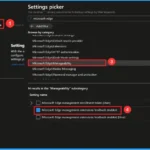
Enabling this policy gives both users and organisations stronger control and protection. It helps IT teams keep track of all extensions, reduce risks, and make work smoother. This way, employees can use safe tools without worrying about harmful add-ons.
1. Improves browser security by monitoring extensions
2. Prevents harmful or unsafe extensions from being used
3. Helps IT teams manage and control extensions easily
4. Supports compliance with company security rules
5. Allows only trusted and useful extensions for work
Enable Extensions Reporting Policy in Microsoft Edge for Sending Data about Extensions using Intune
Without this policy enabled, users can install any extension in Microsoft Edge without the organisation knowing. This may cause security risks if unsafe or harmful extensions are added. IT teams have little control or visibility over what employees use.
With this policy enabled, organisations can see detailed reports about extensions installed by users. They can allow only trusted extensions and stop unsafe ones. This creates a safer, more controlled, and productive browsing environment.
- Manage External Converters for File Extensions using Intune Policy
- Allow or Blocks External Extensions from Being Installed for User Policy using Intune
- Enable or Disable Extensions Performance Detector in MS Edge Browser using M365 Admin Center
Create a Profile
First, sign in to the Microsoft Intune admin center. Then, go to Devices > Configuration > Create > New policy. In the next window, select the platform as Windows 10 and later, and choose the profile type as Settings Catalog. Click Create to continue.
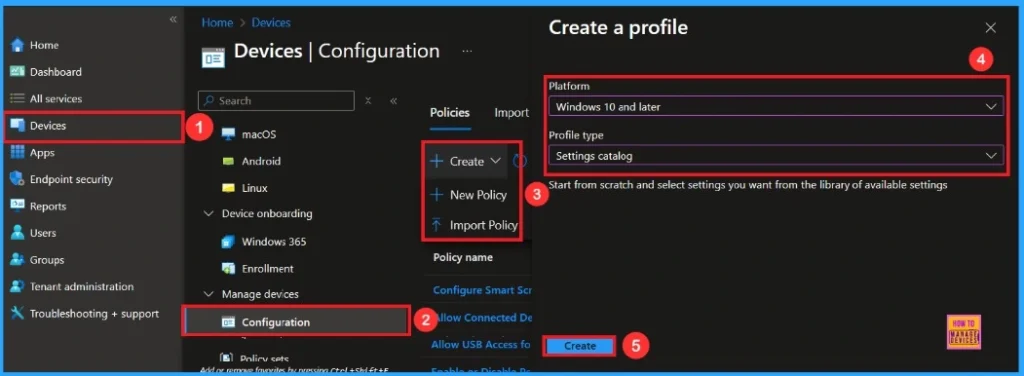
Basic Step
You need to enter some basic details, such as the name and a description. For example, I entered the name as Microsoft Edge management extensions feedback enabled. In the description, I enter To enable Microsoft Edge management extensions feedback. After filling in the details, click Next to continue.
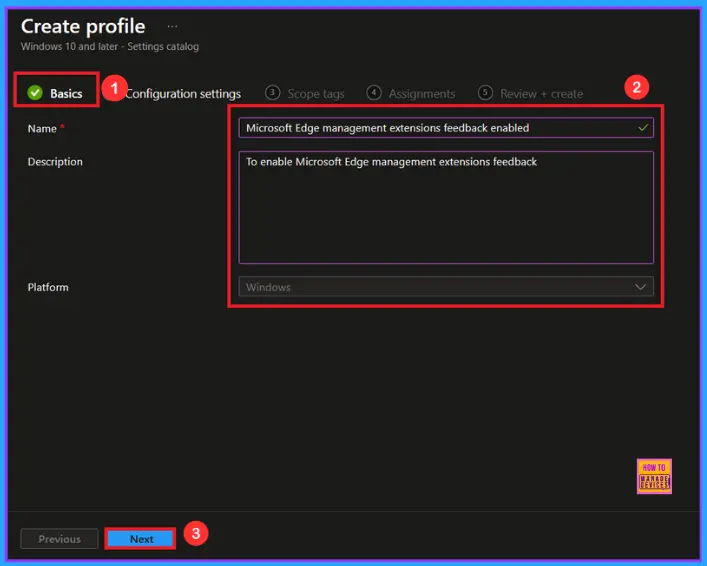
Configuration Settings
On this page, we click on the + Add Settings hyperlink. Then you will get a settings picker that will show different types of categories to select specific settings. Here, I choose to Microsoft Edge\Manageability the category and select the Microsoft Edge management extensions feedback enabled.
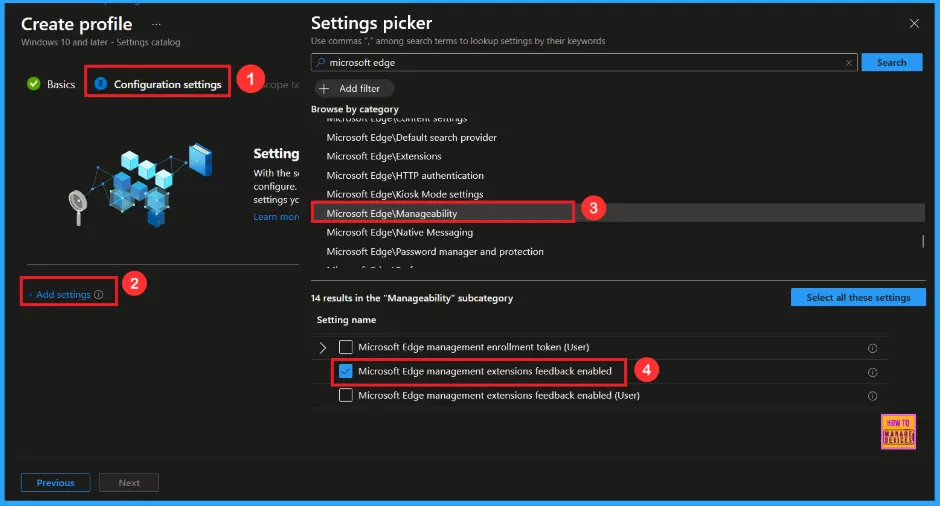
Once you have selected Microsoft Edge management extensions feedback enabled settings and closed the Settings picker. You will see it on the Configuration page. Here we have only two settings: Enable or Disable. By default, it will be set to Disable. If you want to allow these settings, click on the Next button.
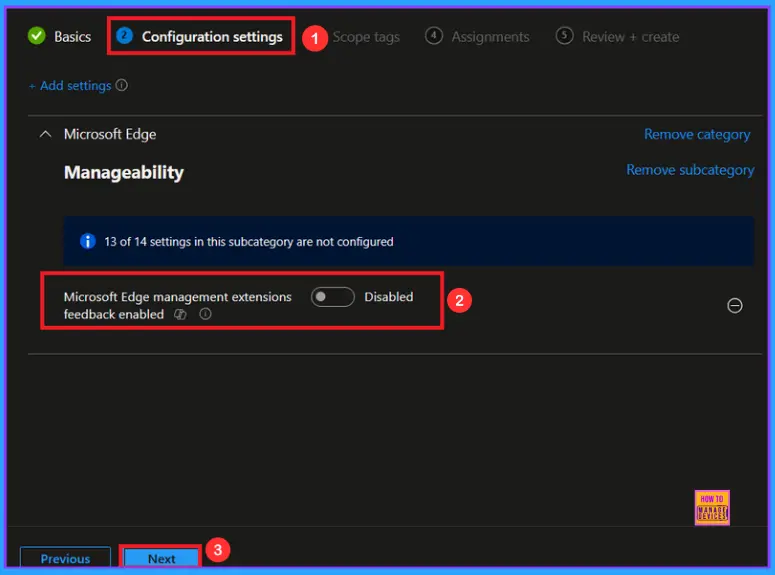
Enable Microsoft Edge management extensions feedback Policy
If you want to enable the policy, you can easily do that for that. You have to toggle the Pan left to the right then, it turns to be blue color and its labelled. Now enabled, then click on the next to continue with the procedure.
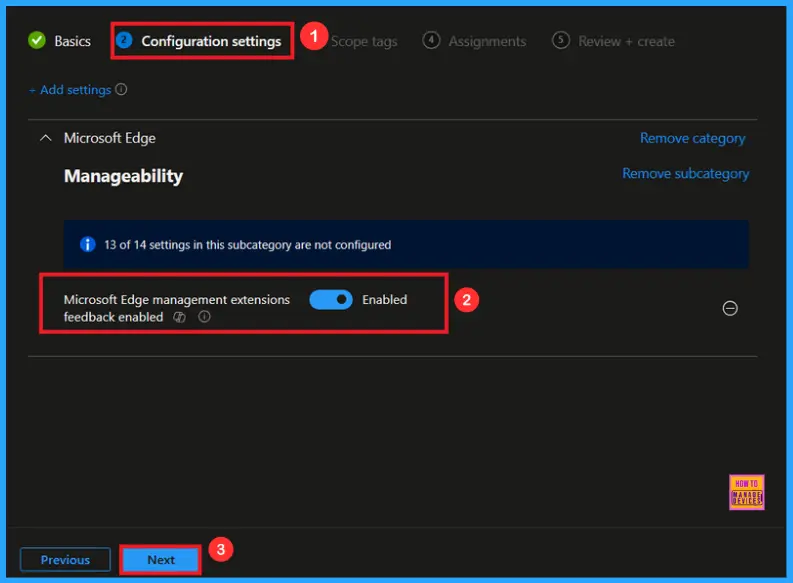
Scope Tag
The next step is Scope tags, which help you organize and manage access to the policy, such as for the department or location. This section is optional, so if you don’t want to apply the Scope tags, just click Next to continue.

Assignments
In this step, you have to decide which group you want to deploy the policy to. First, click on Add groups under the Include groups section, and select the group to which you want to apply the policy. Then, click Next to continue.
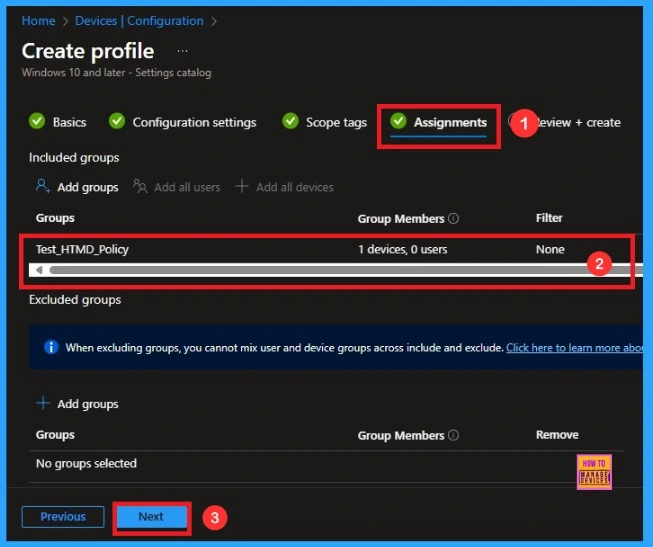
Final Step
You will reach this section after completing the Assignment step. This section acts like a summary page, showing all the steps, you have previously completed. If you notice any mistakes, this is your final chance to edit them. If everything looks correct, click on the Create button.
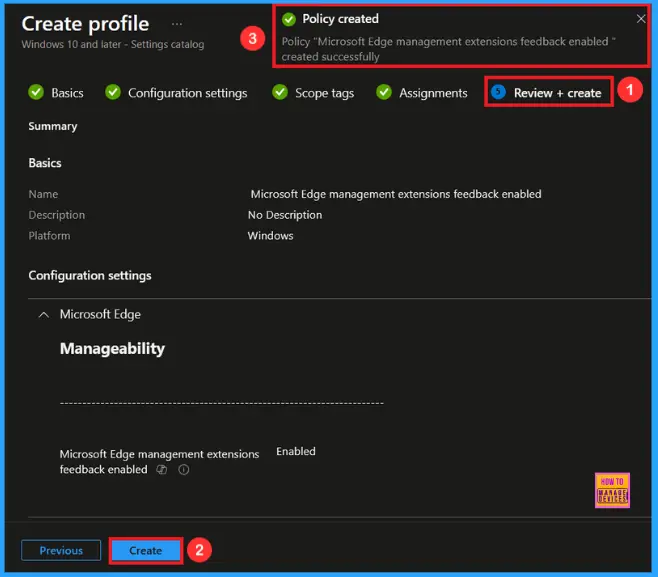
Device and user Check in Status
We can check a policy’s status in the Intune Portal. Generally, it takes about 8 hours for policies to be created. Use the manual sync option to reduce the configuration delay in the Company Portal app on the device, then check the status again. Navigate to Devices> Configuration. Click on the specific policy Microsoft Edge management extensions feedback enabled.
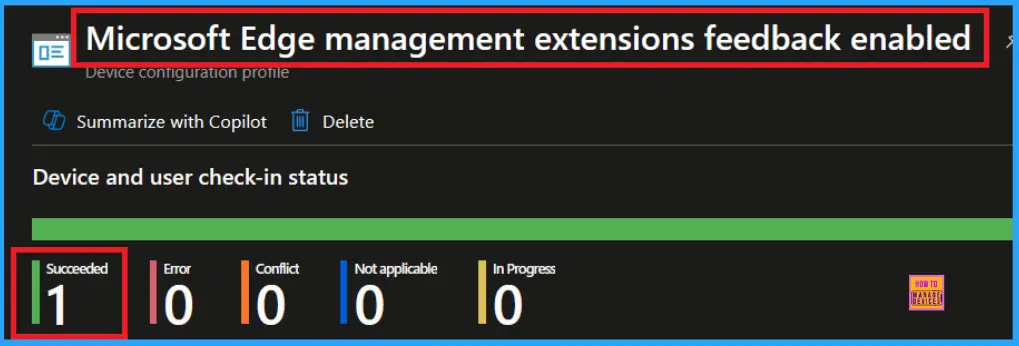
Client Side Verification
To verify the success of the policy, you can employ the Event Viewer. Initially, launch Event Viewer and proceed to Applications and Services Logs > Microsoft > Windows > Device Management > Enterprise Diagnostic Provider > Admin. Then, utilise Filter Current Log and search for Event ID 814.
| Event Details |
|---|
| (EdgeManagementExtensionsFeedbackEnabled) Area: (microsoft_edqev115~Policy~microsoft_edqe~Manaqeability), EnrollmentID requesting merqe: (EB427D85-802F-46D9-A3E2-D5B414587F63), Current User: (Device), Strinq: (), Enrollment Type: (0x6), Scope: (0x0). MDM PolicyManager: Set policy string, Policy |
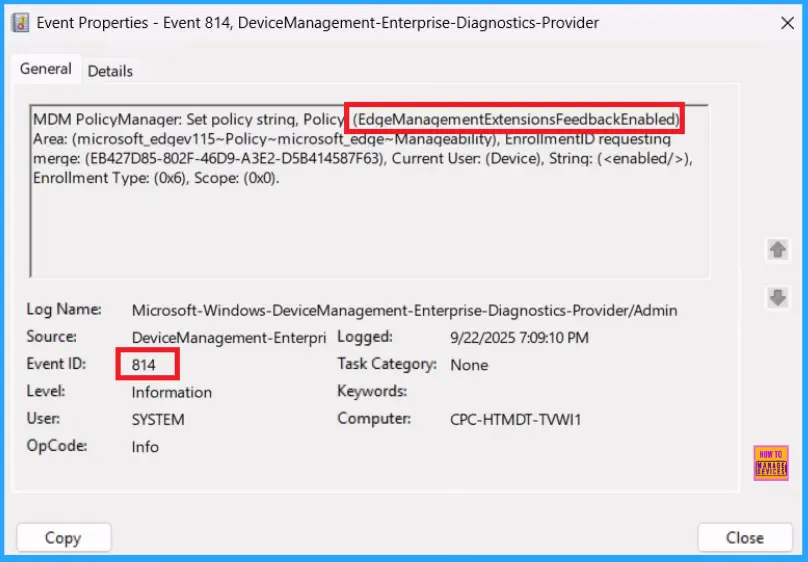
How to Remove Assigned Group from Microsoft Edge Management Extensions Feedback Policy
Sometimes, we need to remove a group from a policy assignment for security updates. Open the policy from the Configuration tab and click on the Edit button on the Assignment tab. Click on the Remove button on this section to remove the policy. Click Review + Save after making the change.
For detailed information, you can refer to our previous post – Learn How to Delete or Remove App Assignment from Intune using by Step-by-Step Guide.
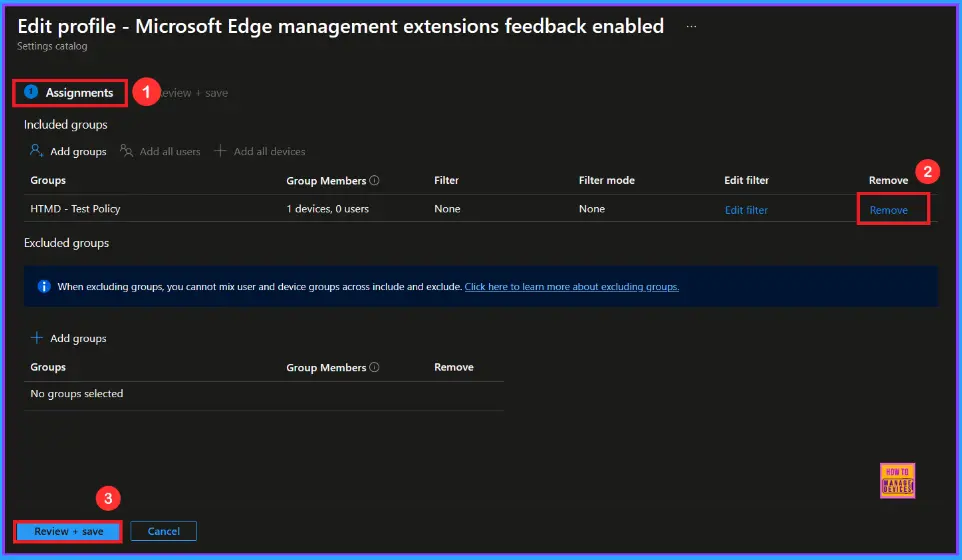
How to Delete Microsoft Edge Management Extensions Feedback from Intune Portal
To delete an Intune policy for security or operational reasons. Search the Policy(Microsoft Edge management extensions feedback enabled. Click the three dots, then click the Delete option.
For detailed information, you can refer to our previous post – How to Delete Allow Clipboard History Policy in Intune Step by Step Guide.

Need Further Assistance or Have Technical Questions?
Join the LinkedIn Page and Telegram group to get the latest step-by-step guides and news updates. Join our Meetup Page to participate in User group meetings. Also, Join the WhatsApp Community to get the latest news on Microsoft Technologies. We are there on Reddit as well.
Author
Anoop C Nair has been Microsoft MVP from 2015 onwards for 10 consecutive years! He is a Workplace Solution Architect with more than 22+ years of experience in Workplace technologies. He is also a Blogger, Speaker, and Local User Group Community leader. His primary focus is on Device Management technologies like SCCM and Intune. He writes about technologies like Intune, SCCM, Windows, Cloud PC, Windows, Entra, Microsoft Security, Career, etc.
